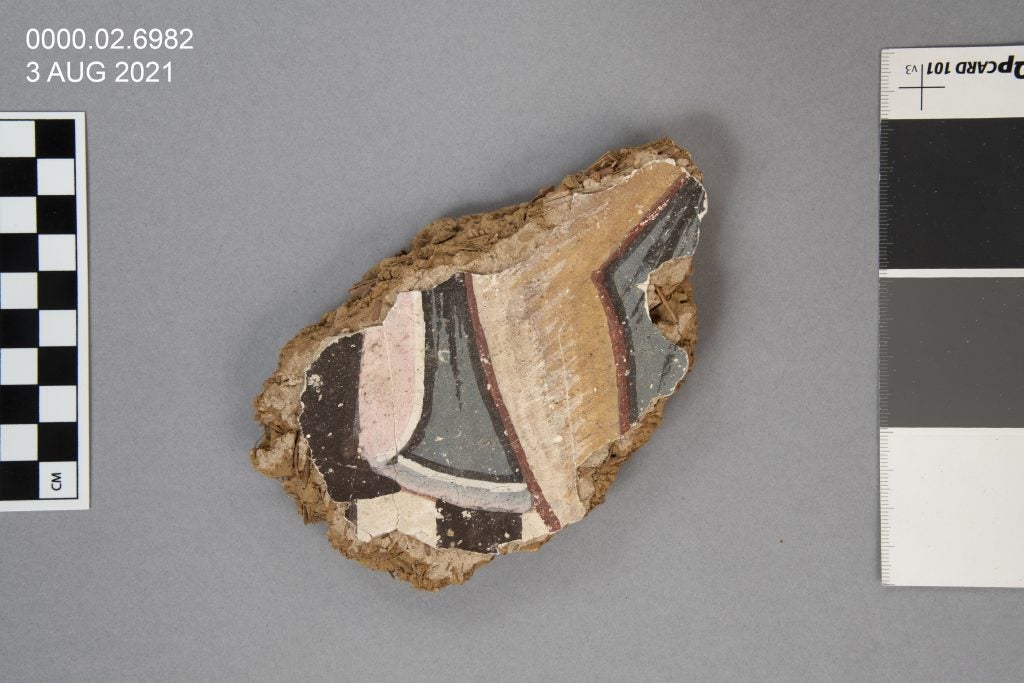By Caroline Roberts and Suzanne Davis

This small and funky fragment of wall painting—excavated at Karanis in 1924—is part of our lab’s technical color research project. What exactly does it show, you might ask? Good question. We knew we were looking at fleshy bits of a human, but we spun this sucker around and around trying to guess what bits. Suzanne thought it was an arm (with an elbow joint) and an archaeologist friend thought it was a leg. Annoyingly, the ancient painter did not define the anatomy well enough for us to make a clear determination based on the joint in question. In the end, however, we decided our archaeology buddy (shout-out to Craig Harvey!) was right, based on … wait for it … the garment we see on display here.
What is obviously a highly fashionable couture cloak is draped luxuriously behind the figure, and the way this falls makes more sense for a leg than an arm. This lovely pale pink garment is lined in blue-gray, with black detailing along the seam of the lining. Seen against the pink of the outer fabric, the lining looks almost purple. And here is where the color research comes in.
The pink is rose madder, but what is the blue-gray-almost purple color? When we imaged (MSI) and analyzed (XRF) it, we discovered that it doesn’t contain Egyptian blue. This isn’t totally surprising, since the color doesn’t much resemble Egyptian blue (which tends to be more greenish), but how did the painter get this shade? The color contains iron and titanium, and it turns out that the black lines in this fragment are also from a paint rich in titanium and iron. So the black pigment isn’t a typical carbon-based black, but—whatever it is (and we have a good guess about this, actually)—it’s probably being used to create the purplish/bluish cloak lining.
Bottom line, this pigment could be what’s known as “optical blue,” a mixture of calcite and black pigment. Alternatively, the fragment could be from a later but still extremely cool period where people were wearing awesome cloaks. Excavation records link the fragment to a wall in a room in a house dating to the first–fifth centuries CE, however, so we’re still believing it’s ancient. But we will need to bring in other forms of analysis (possibly FTIR) to pin down exactly what pigment we’re seeing here.


